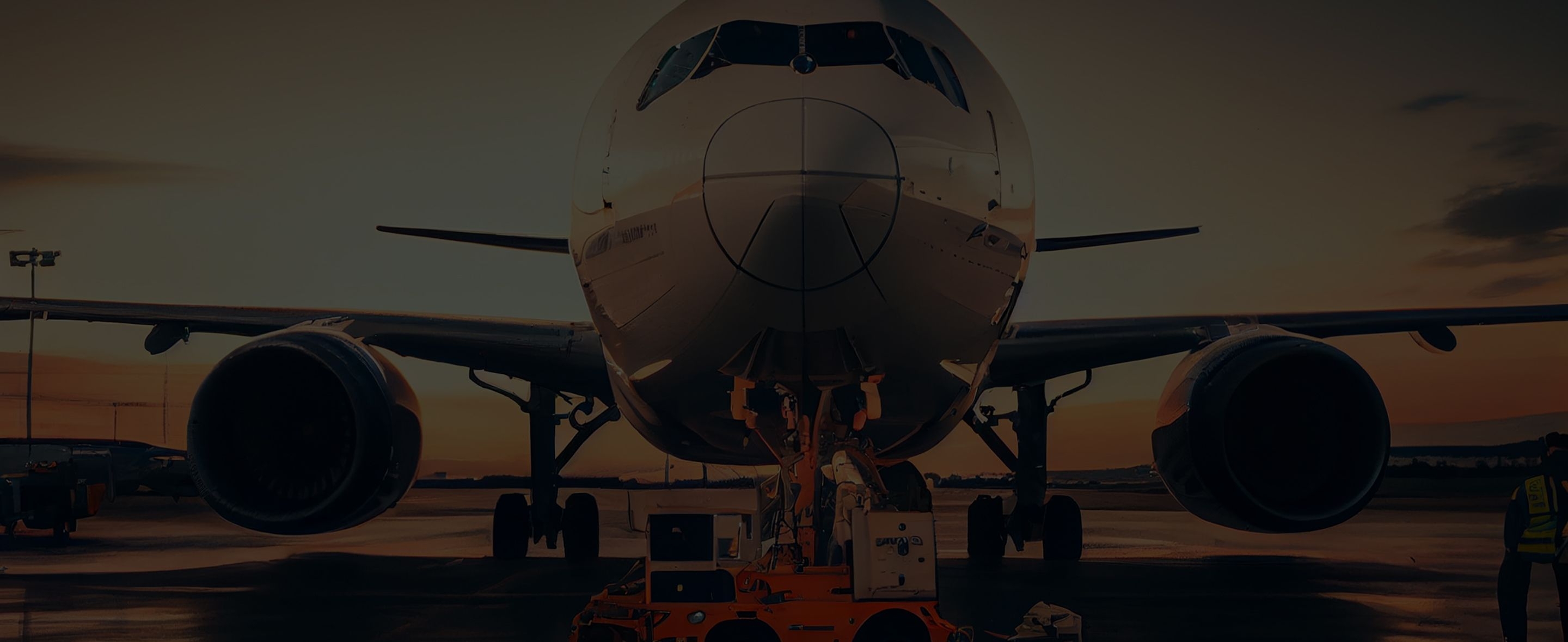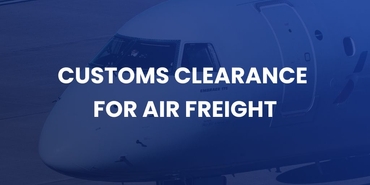
Packing for Air Freight



![]()
When shipping goods internationally, your cargo will go through a rough journey. From handling to moving to the actual transport, it’s very easy for something to go wrong and damage your cargo.
There lies the importance of proper packaging. Especially with air freight shipments, you must ensure that you take the best steps to protect your cargo during shipment. This not only prevents damage to your goods but also ensures that the carrier will not reject your cargo.
Tips for Air Freight Packaging
Packaging for air freight isn’t as simple as putting your goods in a box and calling it a day. You have to consider a bunch of other things, like restrictions on cargo dimensions, air security regulations, the type of box you use and how you secure it, spacing between your items, labeling, and more.
Here are our top tips for air freight packaging.
1. Know Restrictions on Cargo Dimensions
Air freight is notorious for having limitations regarding the type and measurements of the cargo you can ship. Air freight restricts the height, length, and width of cargo.
For standard air freight, the maximum cargo dimensions are 2.44 x 3.15 m. If you need to ship cargo beyond these measurements, you can — provided that you abide by the special equipment packaging.
In this instance, however, there are also maximum heights, which are fixed by the type of aircraft.
2. Research Air Security Regulations
Before your cargo is loaded onto the plane and ready for transport, it needs to be inspected, as per the air security regulations. The inspection may be conducted in one of the following ways:
- Piece/level examination - every box and item is inspected individually by the Regulated Air Cargo Agent (RACA)
- Consolidated - cargo is packed in pallets, and boxes are stacked in unit load devices
- Approved known consignor - does not require further examination or inspection before transport.
Most examinations are conducted via an x-ray machine, which necessarily requires that your cargo can fit in it. Specifically, the cargo must be within the following dimensions:
1.20m x 1.20m x 1.53m LWH
There are also weight limits, namely a maximum of 1000kg per pallet.
3. Use Strong and Sturdy Double-Walled Boxes for Air Freight Packing
Even the box you use for air freight must be carefully considered to ensure the safety of your cargo. They should be high-quality and new, as reused boxes don’t provide a good level of protection.
We recommend that you use a double-walled box as it’s thicker and sturdier, thanks to its layers of corrugated cardboard. These are also the best bet for fragile cargo.
Before tossing your cargo into a box, you need to consider the following:
- Weight - Find the weight restrictions of the aircraft your cargo will be loaded on.
- Moisture - consider moisture and humidity levels and determine if the box you use can protect your cargo against them.
- Pilferage - to prevent your goods from being stolen, use a simple box with no branding, logos, or other giveaways indicating the box's contents.
4. Create Space Between Items
If you’re packing different objects in a single box, make sure you create space between the items so they don’t scratch or destroy each other when the package is jostled or shaken. The best way to do this is to use corrugated inserts between items and bubble wrap them one by one for even more robust protection.
5. Use Packing Tape
Now that you’ve secured your items inside the box, it’s time to secure the box itself. The last thing you want is your cargo to be opened and lost during transport. In that case, packing tape is your best friend.
You want to seal your box as much as you can, leaving no holes for moisture, water, or other contaminants to get in. The type of packing tape you also use matters. Use high-quality, sturdy, thick packing tape to retain its stickiness throughout the journey.
6. Label Your Cargo Clearly
Your box must be clearly and correctly labeled to ensure that the transport crew knows who owns the cargo and to guarantee that you meet the air freight labeling requirements.
Label your box according to the contents. If your cargo is fragile and meant for top-load only, clearly identify these in the packaging. Dangerous goods should be labeled as well, in accordance with international regulations.
7. Don’t Forget the Commercial Invoice
Your cargo should have the commercial invoice to make it easy for customs to determine the contents and who the shipment is from. Without the commercial invoice, customs will delay the export of your cargo, which can lead to fines and storage charges while the authorities are waiting for the proper documentation.
When shipping internationally via air freight, always double-check that you include the proper commercial invoice, which consists of the contents and their value. That way, customs can clear the goods as fast as possible and prevent the delay of your shipment.
What are Air Freight Pallets?
Air freight pallets are wood or plastic containers used to facilitate the handling, movement, and consolidation of goods shipped by air. This also helps to prevent direct contact with the cargo, which minimizes the risk of damage and exposure.
Air freight pallets should be large enough to fit cargo and have a floor-bearing load of more than 100 lbs per square foot. It’s important that you know the rated capacity of the air freight pallet your using and never exceed it.
Further, you should make sure your pallet is not damaged or broken and that you remove the protruding fasteners before placing the cargo.
Importance of Following Air Freight Packaging Guidelines
Recent data shows that $6 million in yearly damages result from poor packaging, and 65% of damage to cargo is caused by inadequate or improper packaging. If this is not enough to underscore the importance of following air freight packing guidelines, then we don’t know what will!
Packing your air freight shipment properly helps ensure that your goods are at the lowest risk of getting damaged during transport. Proper packaging will keep your goods safe and secure with all the movement, handling, and interactions involving moving vehicles, forklifts, and turbulence in the aircraft.
Further, proper packaging also includes adequate labeling, which will further guide the ground crew handling your cargo. For example, cargo with “fragile” or “dangerous goods” labels will receive safer and appropriate treatment.
What Happens if Your Cargo is Not Packed Properly?
Proper packaging is crucial when shipping goods by air. If you don’t follow the proper packaging guidelines, your cargo will be damaged during shipment and unsafe during transport. Air carriers may even reject your cargo and not ship it if it doesn’t follow the packaging guidelines.
Damage to Your Air Freight Shipment
Cargo that is not packed properly can easily get damaged during transport because of the handling, movement, and turbulence that can happen throughout the shipping process. You also risk damaging the goods of other consignors, which can become a massive headache and expense.
Especially if you’re shipping dangerous goods and hazardous chemicals, you need to follow the United Nations performance-tested specifications on the packaging to prevent damage to your cargo, others’ shipments, and transport personnel.
We recommend that you get cargo insurance to protect your shipment.
Rejection by the Carrier for Not Meeting Air Freight Requirements
If your cargo arrives at the airport poorly packaged, the carrier has all the right to refuse to ship it, which causes you additional expenses and delays. This can also cause problems in your supply chain, particularly if you are shipping the goods to your end
customer.
iContainers Can Help You with Packaging for Air Freight
If you’re unsure how to package your air cargo or the process seems just a bit too complicated, you’ll be happy to know that you have a reliable freight forwarding partner to help you with it.
iContainers understands all the requirements in shipping cargo overseas, so we can help you meet packaging requirements. With our expertise, experience, and dedication to customer service, you can guarantee that your goods will be packed properly and get to their final destination without delays, extra expenses, and hassle on your end.
Aside from packaging, we can also help you prepare your cargo for shipment. We offer the most competitive rates to save you money. We also have a digital platform that makes shipping by air easier. From the comfort of your device, you can order a shipment, manage your shipment, and track your cargo in real-time. You’ll also get access to a pool of shipping experts and a customer support team that will be happy to help you 24/7!
Experience the difference in air freight shipping with iContainers. Reach out to us to learn more.
- 1. Tips for Air Freight Packaging1. Know Restrictions on Cargo Dimensions2. Research Air Security Regulations3. Use Strong and Sturdy Double-Walled Boxes for Air Freight Packing4. Create Space Between Items5. Use Packing Tape6. Label Your Cargo Clearly7. Don’t Forget the Commercial Invoice
- 2. What are Air Freight Pallets?
- 3. Importance of Following Air Freight Packaging Guidelines
- 4. What Happens if Your Cargo is Not Packed Properly?Damage to Your Air Freight ShipmentRejection by the Carrier for Not Meeting Air Freight Requirements
- 5. iContainers Can Help You with Packaging for Air Freight
Related Articles
